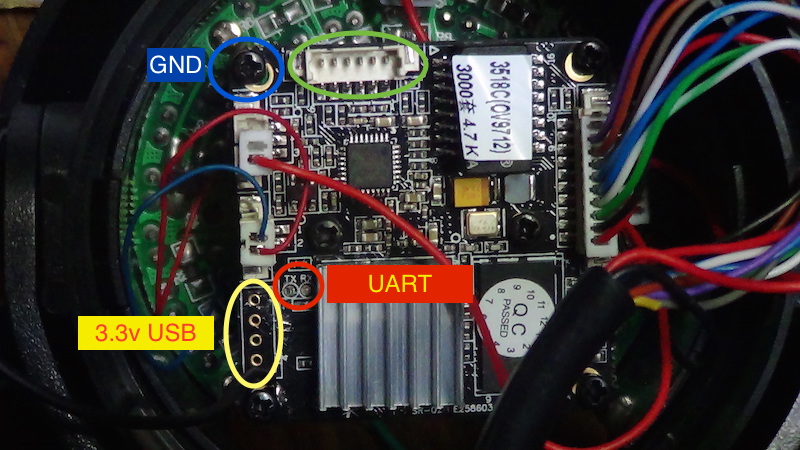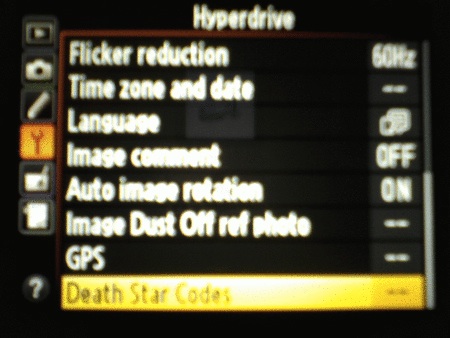Camera Firmware Hack
Get today's popular Digital Trends articles in your inbox: Last year, two Canadian teenagers, Mathew Ho and Asad Muhammad, successfully up into space using a weather balloon as the vehicle. To document the event from liftoff to crash-land, they rigged a basic Canon point-and-shoot camera to continuously snap photos. While it sounds like a complicated science project, it’s actually something many have successfully accomplished (Ho and Muhammad just made theirs unique by sending the little Lego guy with it and, oh, they’re teens). And hacking the camera might actually be the easy part, thanks to an open-source firmware update.
This image from space was taken by a Canon PowerShot camera hacked with CHDK. ( Image via ) While cameras are often already loaded with features, software-based hacks can add new shooting capabilities not mentioned in the instruction manual.
If the inner MacGyver in you is up for some tinkering – and you happen to own a Canon camera, in particular – here are some hacks that will unlock your camera’s hidden potential and add extra value. (Set aside a weekend to study up on the guides before you attempt.) Note: Making any unauthorized changes to a product’s original setting is done at your own risk (duh). These hacks aren’t “illegal,” but they aren’t supported by any of the companies mentioned. Arma 2 Server Cfg Download Xbox. While the hacks are stable, there’s no guarantee they’re 100-percent foolproof.
If you want to try out a hack for fun but afraid of damaging your equipment, get a cheap, used PowerShot to try with CHDK, to get yourself acquainted. A Canon PowerShot G7 hacked with CHDC. ( Image via /Flickr) On its own, a point-and-shoot camera is a basic device for capturing photos. But if you own certain Canon PowerShot models, you can add some nifty features without upgrading to a more advanced model by using what the Canadians used: the Canon Hacker’s Development Kit, or CHDK.

Supported PowerShot models – and there are many – range from the budget A10 to the more sophisticated G15, but you can head to the CHDK’s Wiki page for a full list. As you guessed it, this hack only works with Canon cameras.

With this firmware hack, you can add RAW image format support (removing a lot of the in-camera processing that the camera does to an image), manual control, bracketing (taking several shots at different settings), additional onscreen info, motion sensing, time lapse, auto triggering, interval shooting, enhanced video capture, USB remote, and even games like Tetris. There are many more features we haven’t mentioned, but the point is that this camera hack can a lot of value to a cheap camera. With these features, you can set your PowerShot to take beautiful time-lapse photos of highway traffic or, like Ho and Muhammad, send it into space to take stunning photos of the Earth. Various CHDC menu screens. ( Images via /CHDK Wiki) The best part about CHDK is that it’s fairly simple to set up and use, it’s free, and it doesn’t mess with camera. The firmware is downloaded onto an SD card via a computer, and the extra features are enabled once you insert the card into the camera.
Apr 28, 2014. Photography and Camera News, Reviews, and Inspiration. Progress to the next level! If you're the kind of person who loves to take things apart to find out how they work, you'll love the ingenious camera hacks below. The hacked firmware that's available for many cameras is a proper usage of the term. May 30, 2013. By now you've likely heard about CHDK for Canon point and shoots and Magic Lantern for select DSLRs, but plenty of other firmware exists to supercharge several other camera models and makes. DIY Photography put together a comprehensive list of them all. The DIGIC III Image Processor, introduced in 2006, was advertised to deliver improved image quality, faster operation and extended battery life compared to its. The deal with USB Almost all webcams, even those inside your laptop's screen, are USB devices. There is a standard for USB video cameras, the UVC standard.
Once you remove the card, you can return the camera to its original factory state. The CHDK Wiki page is chock-full of information that includes a Dummies guide on how to get started, tutorials on the features, project ideas, and a forum where the CHDK community congregates. Once you become familiar with the new features, you can use your once anaemic PowerShot to do some neat tricks. Magic Lantern. A Canon EOS 60D DSLR running Magic Lantern successfully ( Image via /Flickr) Like CHDK, is open-source software for Canon DSLRS, with an emphasis on enhancing video production (Magic Lantern’s creators don’t like to refer to it as a hack but a separate program that complements the camera’s software, but you get the idea). The supported DSLRs are the ones that can handle video capture, like the EOS 5D Mark II, 60D, Rebel T1i, etc., with future support for the 7D, 5D Mark III, and more. Essentially, it gives these DSLRs many of the similar advanced features that are found in more expensive video cameras.